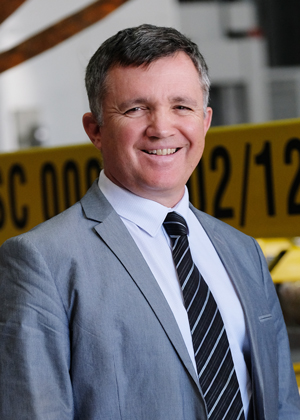23 May 2017
Nuclear industry and Big Science
CNIM delivers the final radial plate for the ITER nuclear fusion reactor to its client, F4E
Three years after the delivery of the first radial plate, the teams from CNIM and its partners were on hand on 23 May 2017 to see the last plate dispatched for Italy. These massive steel rings form the skeleton of the 18 toroidal field coils required to confine the plasma within the ITER vacuum. As partners in the ITER project since 2007, CNIM and its Italian partner SIMIC have manufactured 35 of the 70 radial plates which will form the heart of the ITER.

The last plate was loaded onto MV STAPELMOOR bound for La Spezia in Italy, where it will be fitted into the toroidal coil, a giant magnet used to generate the intense magnetic field required for the functioning of the ITER. The delivery marks the culmination of a ceaseless five-year effort of teamwork, investment and innovation.
Eva Boter, F4E's Technical Officer managing this contract, recalls how it all started:
We needed to develop a series of smaller prototypes in order to reach the full scale components. It was an exercise in many stages. With every step we made we gained confidence. I remember when we presented at MT-22, the Magnets Technology conference, parts of the real size mock-ups of the radial plates, and people were gathering to view them. They were fascinated by the machining and precision that underpin this equipment.
Alessandro Bonito-Oliva, F4E’s Project Manager for Magnets, remembers the first information meeting that took place almost eight years ago where companies expressing interest in the fabrication of the radial plates were invited to F4E.
We have come a long way since that meeting where we needed to figure out who was interested in their production, understand if they had the know-how and whether they would they be inclined to compete. Today, we stand in front of final radial plate ready to find its way to ITER. I would like to congratulate our industrial partners for this achievement and the members of the team. Europe has proudly concluded one of its main contracts in the area of magnets.

Eva Boter, F4E's Technical Officer and Alessandro Bonito-Oliva, F4E’s Project Manager for Magnets
Two years of technological challenges in support of the ITER
The properties of the material used, the weld quality, the scale of the parts, the dimensional tolerances and the sustained pace of manufacture have made this a very complex project, both in terms of technology and project management. CNIM has met these challenges by adapting its range of industrial tools: « Programs like this one are great accelerators of innovation, explains Philippe Lazare, CEO of the Industrial Systems Division, CNIM’s ability to react and mobilize is a real asset. » The Group has therefore acquired two 15m x 10m portal machines for the fabrication of large parts, housed in a purpose-built, air-conditioned 3,000 m² building with direct access to the sea, which is vital for shipping the radial plates to La Spezia.
Exceptional levels of performance
The processes implemented for the series manufacture of the radial plates – electron beam welding in a local vacuum and local machining – were developed as part of an internal R&D program, then under a specific contract with F4E, between 2009 and September 2012. This made it possible to achieve exceptional levels of performance in terms of tolerances and weld quality. « We have successfully overseen the forging of stainless steel blanks of very large dimensions, constantly flirting with the technological boundaries » says Jean-Claude Cercassi, CNIM’s Development Director on the ITER Program.

Jean-Claude Cercassi, CNIM’s Development Director on the ITER Program
The project has represented 300,000 hours’ work for CNIM, carried out by some sixty employees. « Thanks to the commitment and mobilization of the teams, CNIM has met the challenge of attaining the high quality demands of the product, while keeping to the delivery schedule of one plate every three and a half weeks », emphasizes Jacques Silva Ribeiro, CNIM’s Manufacturing Methods Manager. « We have made considerable improvements in our project management methods and in involving our partners, particularly with the systematic implementation of back-up plans ».
Reproducing solar energy on earth
ITER is a very large-scale scientific experiment to demonstrate the scientific and technological feasibility of fusion power, thereby opening the way to its industrial and commercial exploitation. Construction work began in 2010 at the Cadarache site, 120 km from La Seyne-sur-Mer, and the first experiments should be carried out by late 2020. « The faith that F4E has placed in us by recognizing our high-tech capabilities encourages us to persevere with the deployment of our strategy to invest continually in researching new technological processes and reinforcing our industrial model by managing the whole value chain, from design to production », concludes Philippe Demigné, a member of CNIM’s Management Board.
